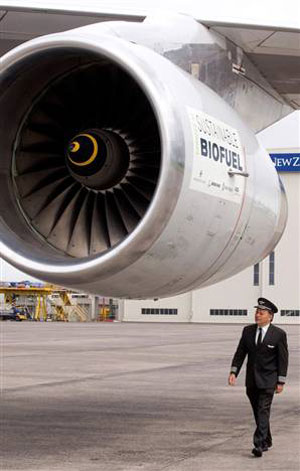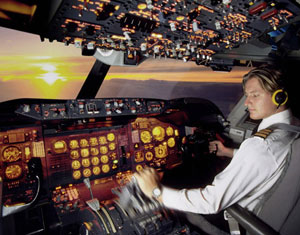Aeroplane Pilot
Tasks & duties

Aeroplane pilots may do some or all of the following:
-
prepare or check flight plans
-
check weather forecasts for flights and destination airports
-
check what facilities are operating at destination airports
-
check the load, fuel and equipment including the oils, hydraulic fluids and the general state of the aircraft
-
calculate the amount of fuel needed for flights
-
check what repairs have recently been made to the aircraft
-
check the outside of the aircraft
-
program flight management systems that help to plan flights and fly the aircraft
-
greet passengers, give them assistance and ensure they are seated
-
prepare the aircraft for take-off
-
get clearance from air traffic control to taxi (move along) onto the runway
-
taxi the plane onto the runway
-
fly the plane to its destination
-
manage the flight crew
-
report flight progress to air traffic control
-
get clearance to land and be told by air traffic control where to park the aircraft
-
land the aircraft
-
taxi the aircraft to a parking place
-
write reports and keep a flight log
-
help clean the aircraft
Specialisations
Charter pilots
Charter pilots fly smaller aircraft for a variety of purposes. Some fly tourists, others provide air ambulance services or provide services as needed by the client, such as aerial photography or land surveying. Charter pilots often work irregular hours.
Skills & knowledge

Aeroplane pilots need to have:
- excellent flying skills
- knowledge of flight theory and flight planning
- skill in interpreting flight plans, weather information, and navigation data
- understanding of civil aviation laws
- knowledge of safety rules and emergency procedures
- planning and decision-making skills
- good communication skills
- record-keeping skills
Entry Requirements
The first step in becoming an aeroplane pilot is obtaining your Commercial Pilot Licence (CPL).
To obtain a Commercial Pilot Licence, you must:
- be at least 18 years old
- hold a current NZ Class 1 medical exam
- hold a current NZ Private Pilot Licence
- pass CPL written exams
- complete a minimum of 200 hours' flight time
- satisfy the Civil Aviation Authority's (CAA) Fit and Proper Person requirement
- pass the English Language Proficiency test
Civil Aviation Authority of New Zealand website – how to be a pilot guide (PDF – 0.99MB)
Civil Aviation Authority New Zealand website – Commerical Pilot Licence information
Aviation Careers website – Fit and Proper Person criteria
Newly qualifed pilots typically start working as flying instructors or charter pilots.
To work as an airline pilot, you will need a minimum of between 1,000 and 2,000 flying hours (depending on the airline you'd like to work for) and a New Zealand Air Transport Pilot Licence.
Civil Aviation Authority New Zealand website – Airline Transport Pilot Licence information
Secondary education
Although there are no specific secondary education requirements for becoming an aeroplane pilot, Sixth Form Certificate or NCEA equivalent English, maths, computer studies and physics are helpful.
Tertiary education
Flight training is available at tertiary education institutions, aero clubs, flight training schools, and the Royal New Zealand Air Force.
Training on the job
Aeroplane pilots build up their flying hours on the job, and can gain an instrument rating (which allows them to fly aircraft that use instruments for navigation at night and in conditions where there is poor visibility). They also learn how to fly in different conditions.
When working for regional, national or international airlines, pilots are taught about the aircraft they will be flying and the latest aircraft technology. They are also taught emergency procedures, and are briefed about issues that affect the aviation industry.
Useful Experience
Useful experience for aeroplane pilots includes:
- working as ground crew at an airport
- working as an aircraft engineer
- loader/driver work
- experience with computers
- experience with navigational and radio equipment
Related courses
Aircraft Operation
For more information, please refer to Career Services.
Document Actions
